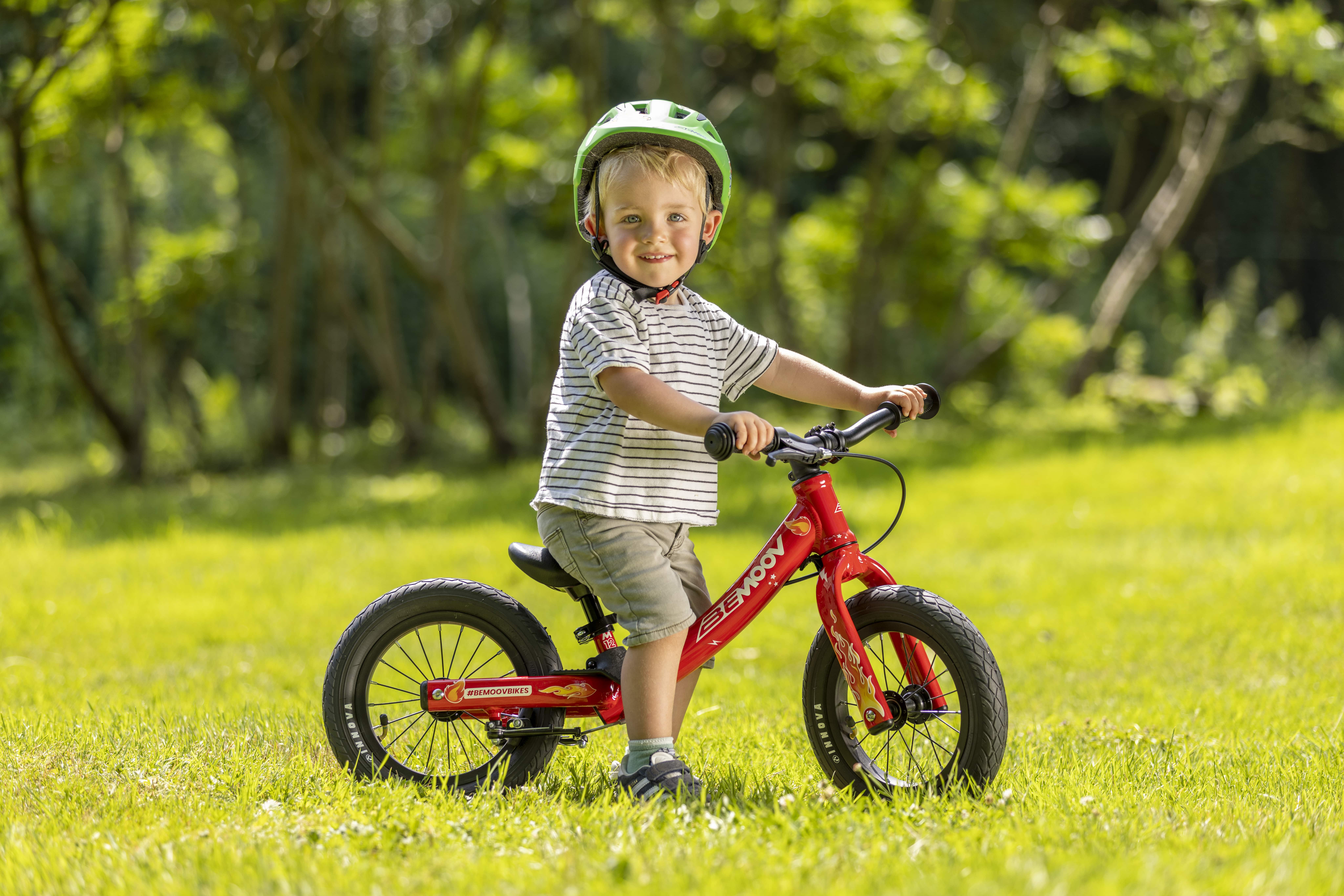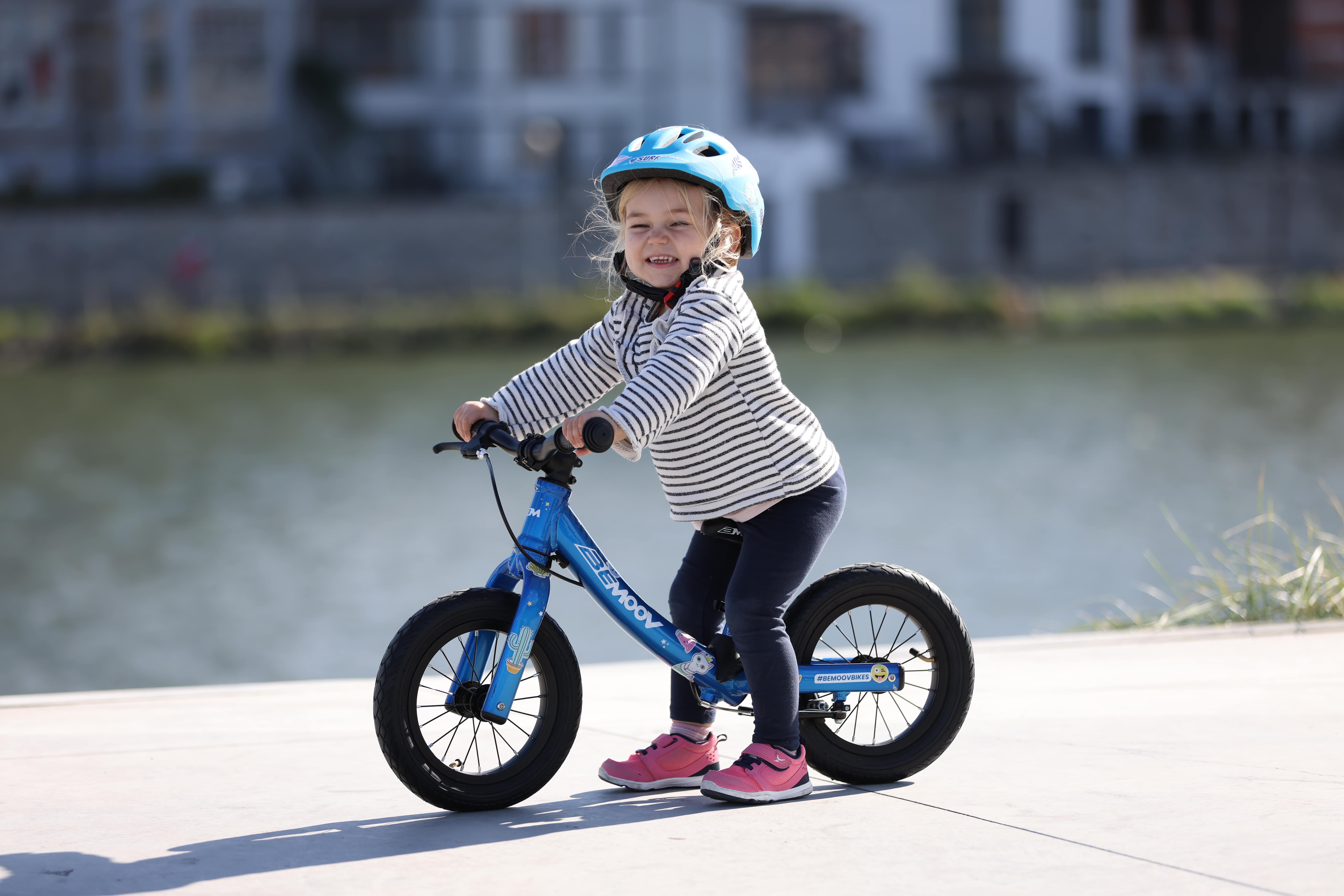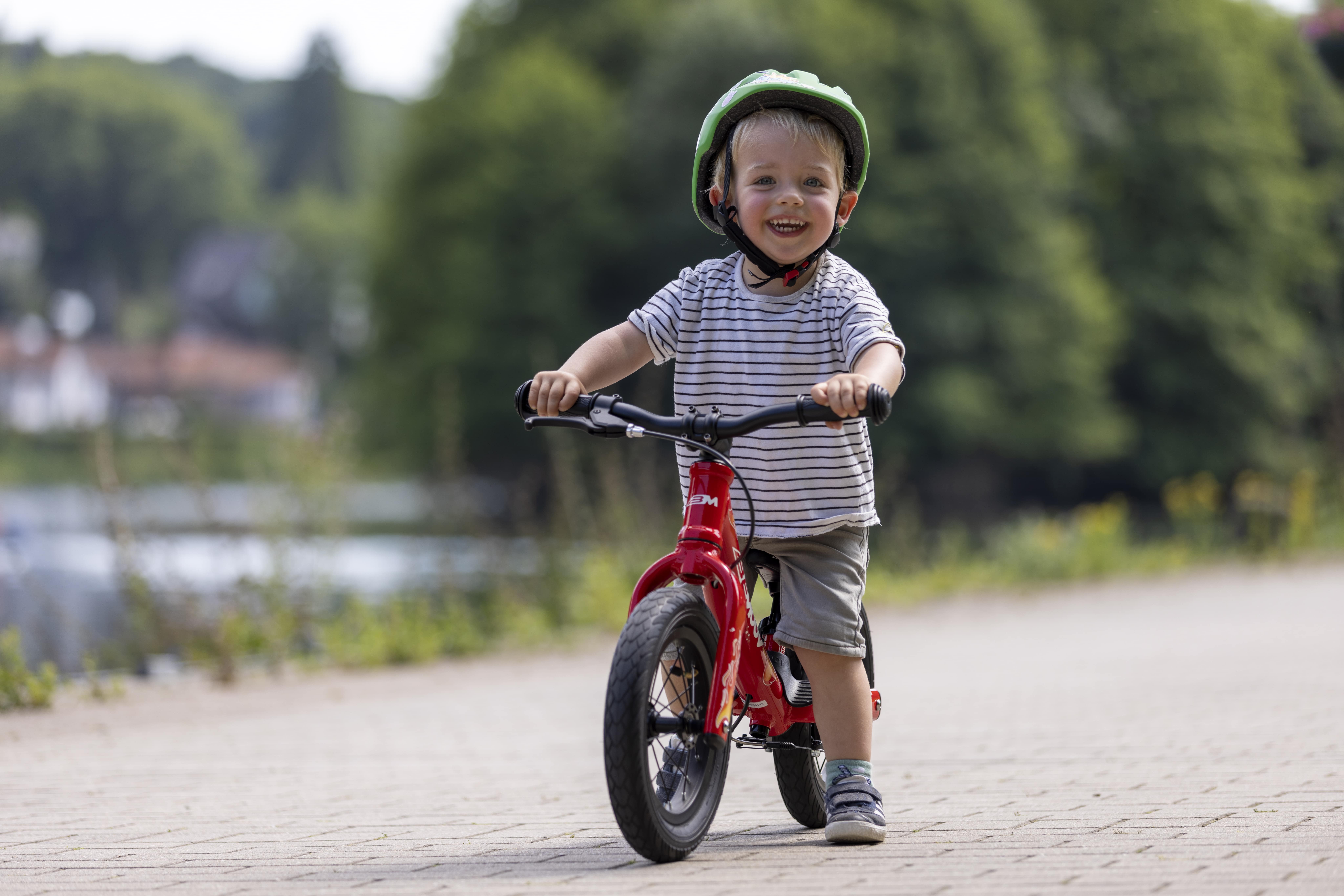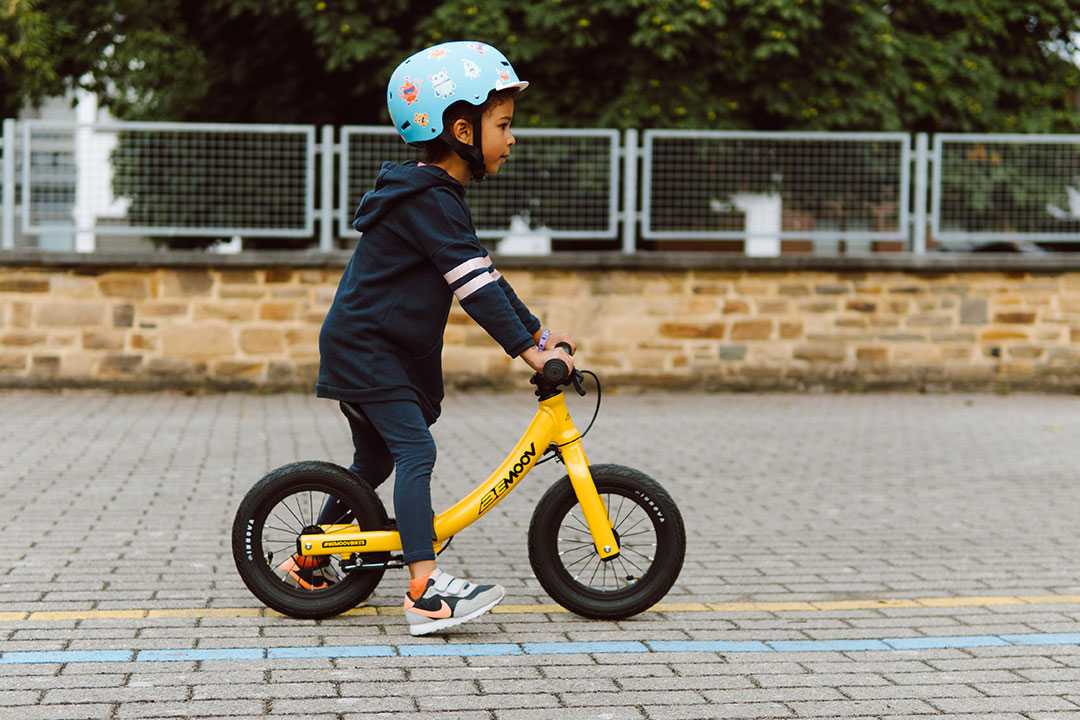Why the balance bike is better for learning to cycle
At BEMOOV, we know that a geometry adapted to children’s body shape as well as a light and easy-to-ride bike allows children to be autonomous on two wheels more quickly. Of course, we are preaching for our parish ... And we believe it, because in truth, our conviction that balance bikes are far better for children is the reason our company exists!

Why is the balance bike a better choice than the tricycle?
With the handlebars higher than on a bicycle and the pedals often located on the front wheel, the tricycle does not offer a good position.
In fact, younger children often have difficulty moving their tricycle forward on their own. The lack of a chain and the position of the pedals on the front wheel mean that at the slightest bump in their path, a child often asks their parents for help.
The tricycle will also not help your child develop a sense of balance, unlike the aptly named balance bike.
With a balance bike, children quickly gain autonomy. After a few minutes of trial and error, how to operate a balance bike will generally be intuitive. In addition, children will easily be able to overcome hills or obstacles that they face.


The advantages of a balance bike for learning to cycle
When children are already able to walk well, then they can ride a balance bike. Depending on a child’s motor development, learning to ride a balance bike is ideal starting at 18 months, sometimes even earlier.
Some may take more time to get comfortable with the idea of imbalance and rebalance, but most children will instinctively use their feet to start off.
The children will successively put one foot and then the other on the ground, bringing it from front to back, which will gradually increase the speed of the balance bike and initiate the instinctive motion of pedaling.
Once launched, children will just have to lift their feet and put them on the footrests to fully enjoy the feeling of rolling freely.
Learning to balance:
This is the main argument: children will instinctively discover their balance by adopting a position closer to that which they will encounter on a bicycle.
Half-seated, half-standing, they learn to find their balance by adapting this position, especially if the balance bike is equipped with ergonomic footrests.
Switching to a bike with pedals will also be easier if the children have already acquired balance from an early age, and they will be very comfortable on 2 wheels all their lives!


Stimulating the reflexes
The use of the balance bike stimulates children and encourages them to shift their body weight gently from one leg to the other.
It is also an opportunity to learn to manage the bike’s direction, speed, and motion of stopping and starting again, if the balance bike is equipped with a real rear brake ... which is something our bikes have!
Your child will also be able to test their own limits and take measured risks, develop their skills, and gain confidence safely.
Development of coordination and dissociation of movements
On a balance bike, children push alternately on one foot and then the other; they must also manage the transfer support from one to another leg, and manage with the imbalance. It is therefore a constant stimulation of these psychomotor abilities, which will teach them to dissociate their movements, an essential step before switching to a pedal bike.


The balance bike is recommended by the national education board in France
Did you know? In France, the use of the balance bike is recommended to develop children’s balance in kindergarten, to "adapt their balance and movement to various environments or constraints.




